Palmyra Atoll: Meet the scientists battling Covid and climate change on one of America’s remotest Pacific islands
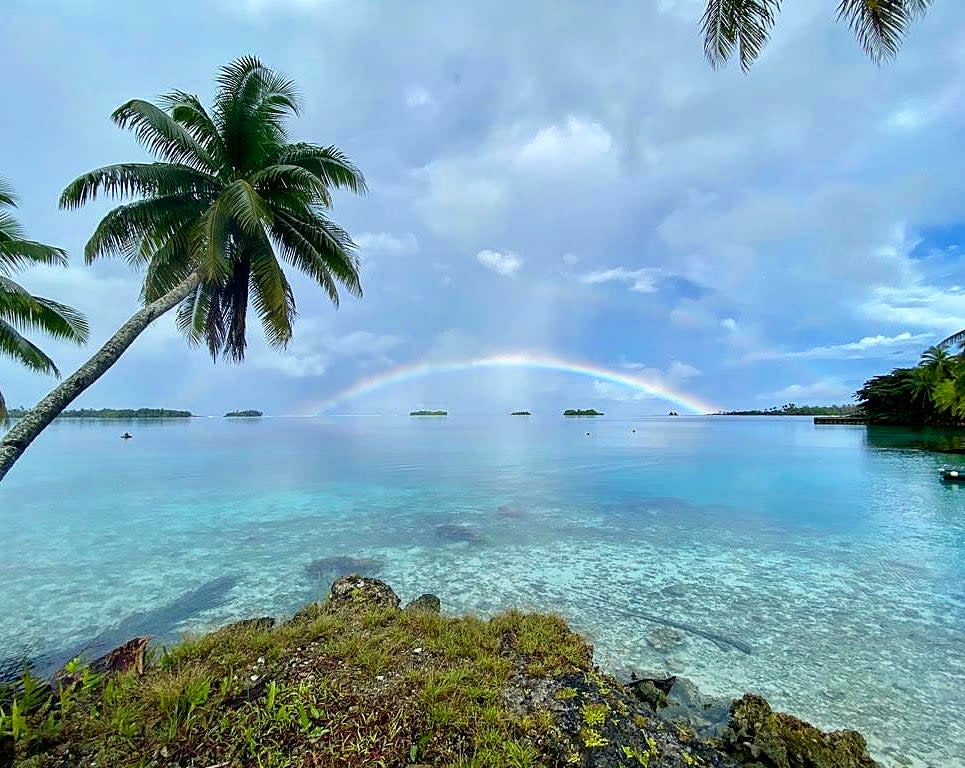
Palmyra Atoll, a remote set of islets in the Pacific Ocean, was once used as a military base and is now a key hub for US climate research.
(Courtesy of The Nature Conservancy / Audrey Mills)Legend has it that in 1816, a pirate ship called the Esperanza, Spanish for hope, was attacked by a mysterious vessel as it carried looted Incan treasures across the Pacific. The raiders took the gold from the ship and imprisoned the Esperanza’s crew. Their ship full, they crashed onto an uncharted atoll.
The looters buried the treasure for safekeeping and set about building a new ship to sail for help. Of the 90 who were said to have survived the wreck, only one ever made it back to shore and died shortly after. The rest were lost to disease, further shipwreck, then history itself. The treasure, if it exists, hasn’t been found.
Now, that tiny stretch of sand and coral has a name, Palmyra Atoll, and a crew of current residents who are still trying to balance hope, cooperation, disease, and plunder. The 4 square mile collection of islands, 1,000 miles south of Honolulu and at the furthest reaches of US territory, has become a hub for crucial ecological and climate change research. It’s helped scientists study what a healthy ocean looks like, and how radical, decisive action can revive whole ecosystems at once and save the world’s hundreds of low-lying tropical islands from invasive species and humans alike.

Once used and abused as a US military base during WWII, the atoll was largely left alone for decades to rewild, and is now one of the rare, near-pristine island habitats left on Earth. It’s a steady baseline in a world careening up and down on waves of climate change. Together with the hearty people who live and work there, who have endured an election, a pandemic, plus all the weather and wildlife the tropics could throw at them, Palmyra offers something even rarer than unspoiled terrain: hope, or better yet, a blueprint for action.
Life on the atoll
Adi Khen, a graduate student at the Scripps Institution of Oceanography in California, spent years studying minute changes to Palmyra’s corals remotely before she saw them in person during a rotation on the island in late 2020. It changed her forever.
“Seeing it for the first time is something I still haven’t completely put into words,” she told The Independent. “The first time I went snorkelling on the reef, I was crying underwater. I had this feeling, these reefs are family. I’ve seen them in the imagery, over and over again. I’ve seen these individual corals grow and bleach and die and recover, and here they are in real life.”

A few weeks on the atoll convinced her she wanted to spend the rest of her life studying Palmyra. It’s clear, talking to the quirky fraternity of biologists and world adventurers who work there, this is a common feeling. It’s not hard to see why the place inspires such dedication.
Palmyra Atoll is overstuffed with life, a sublime reminder of how vibrant the Earth can be when humans allow it. Sea turtles, sharks, manta rays, and more than 400 species of fish flow over healthy reefs in gem-tone water. Clouds of white terns hover overhead. Palmyra has a colony of nearly 25,000 red-footed boobies, a population of the birds second only to the Galápagos. Coconut palms hem storybook lagoons.
“One of the things that really sticks with me is going out at night and just seeing armies of crabs marching down the beach,” said Mele Khalsa, an island restoration specialist from Island Conservation, a group working on Palmyra. “It felt like there were 100,000 of them. There were just so many of them, and they’re all just kind of ambling alone with no care in the world for humans and all the drama of the world.”
If you stand still, there are so many crabs you can hear them rustling and clacking against each other in the jungle.
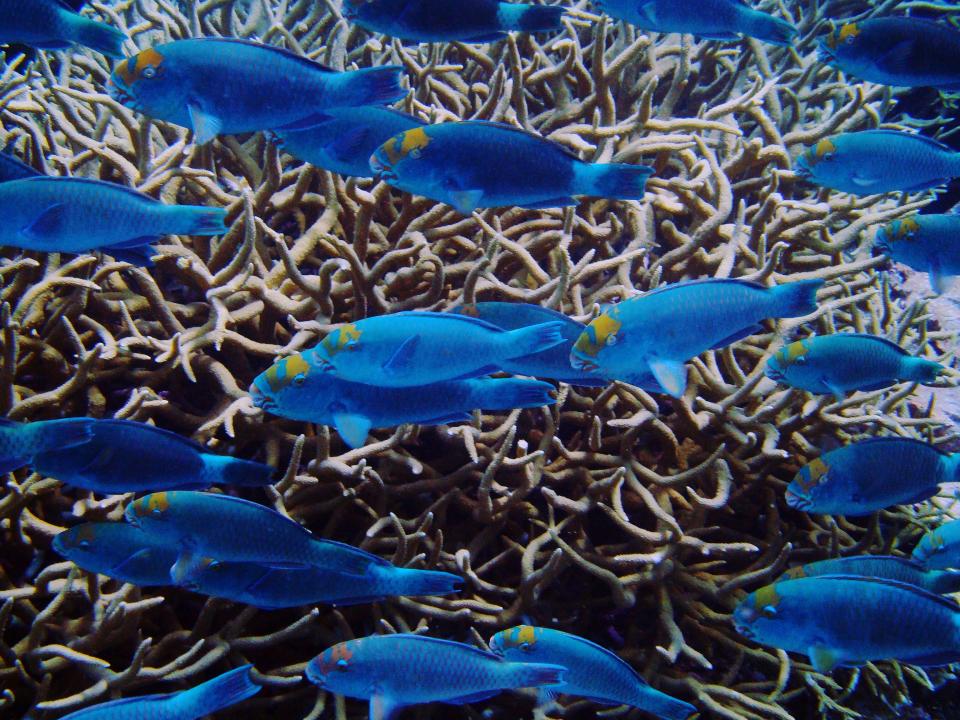
The only thing that matches the abundance at Palmyra is how thoroughly humans nearly destroyed it, and the lengths to which they’ve gone to bring it back.
Beginning in 1939, the US Navy annexed Palmyra from its private owners and used it as a base for approximately 6,000 troops until the end of WWII, levelling native forests, building runways, and leaving munitions and other waste strewn across the atoll.
In a too-on-the-nose version ofE plurbus unum, the US military took the 50 or so islets that make up Palmyra and terraformed them until they were essentially a single land mass.
In addition to bringing men, bombs, and politics to the uninhabited atoll, the soldiers also likely brought rats, which hijacked the ecosystem and cut into crab, bird, and native tree populations.
And about those postcard coconut palm trees: those were invasive too, likely first brought over an estimated 1500 years ago on voyages from ancient Polynesians across the Pacific, then used and ultimately abandoned in modern days in a series of failed coconut plantations on the atoll.
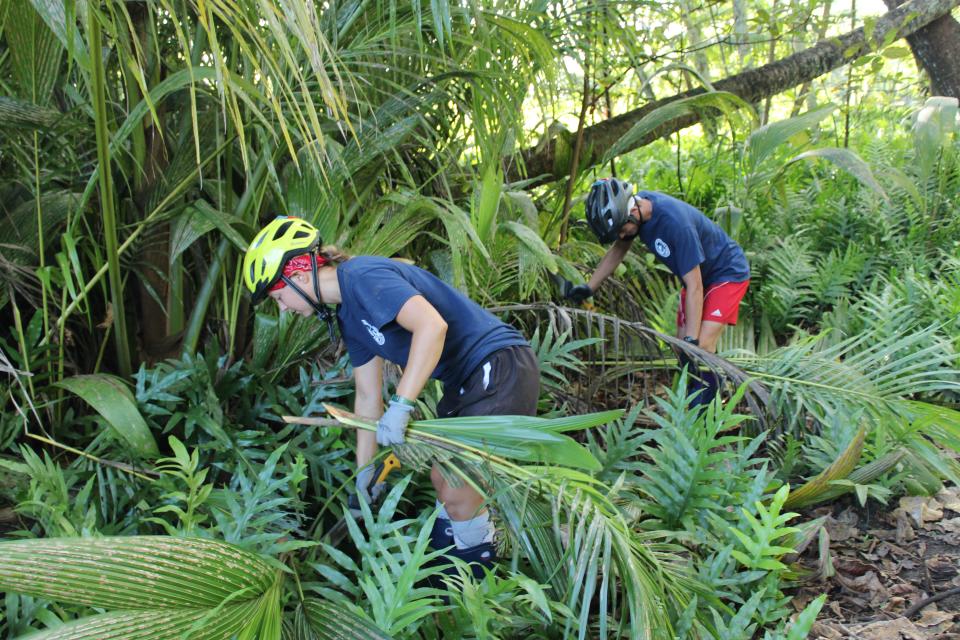
By the time conservation group the Nature Conservancy bought most of Palmyra from its private owners in 2000, the palms had taken over huge swathes of the atoll, crowding out native plants, eliminating preferred nesting sites for native birds, posing a safety risk to crews with falling coconuts, and altogether snapping the delicate web of interactions between hundreds of different species needed to sustain the island’s ecosystem.
Islands, because of their isolation, can amass outsized biodiversity and protect unique species, but that same isolation leaves them vulnerable. With the rats and palms dominating the atoll, things had entered a kind of grim stability, where nothing much was changing, which only underscored how badly things needed to change.
“There was a very stable ecosystem, coconut palm- and rat-dominated,” said Alex Wegmann, science director at the Nature Conservancy’s Palmyra programme. “It was unlikely to alter from that without significant intervention.”
Palmyra became a place of war once again, only this time the enemy was not fellow humans, but rather the way humans had interrupted their fellow creatures.
Scientists led a successful campaign and completely eliminated rats from the island in 2011, using slingshots and hanging from helicopters to deliver poison bait. They also used wooden dummies and a “seabird discotheque” to get birds like the Phoenix petrel, tropical shearwater, wedge-tailed shearwater and white-throated storm-petrel to start roosting on Palmyra again. As the rat population declined, scientists began spotting species of crab they’d never seen on the islands before, and disease-bearing mosquitoes largely died out. Now other island chains like the Chagos Archipelago, the Tetiaroa Atoll, and the nearby(ish) Hawaiian islands are considering similar projects, inspired by Palmyra.
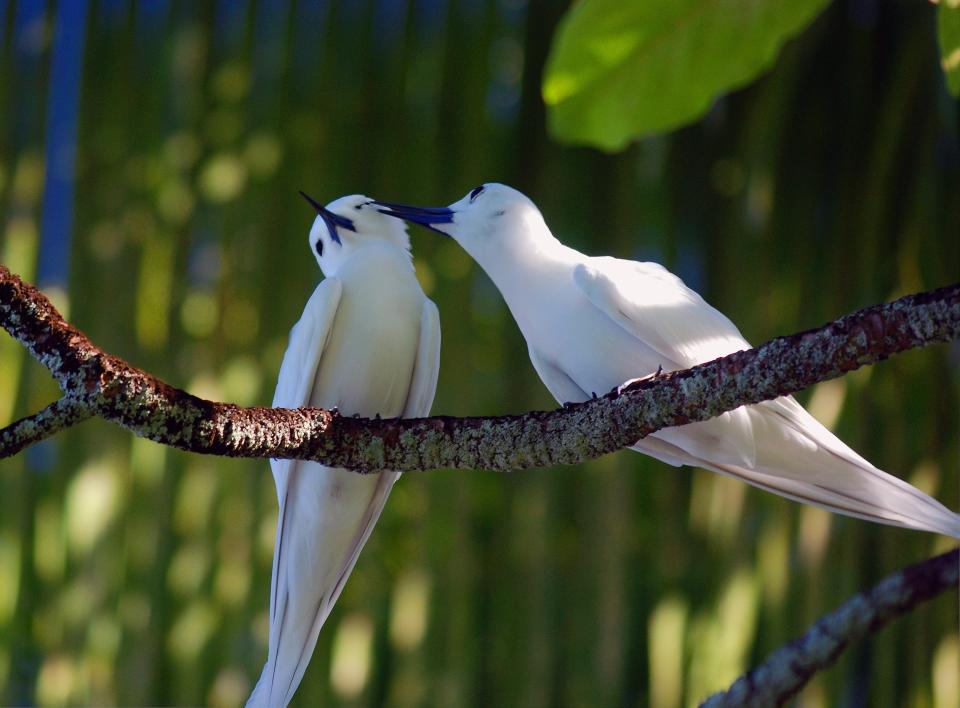
In 2019, after aerial surveys via drone, they also set about on a $2 million plan to remove most of the palms, and have covered about half the island, clearing nearly a million specimens so far, mostly by hand. The trees had been such a successful species on the island that they’d outgrown native plants and created dense thickets that were nearly impenetrable to other life forms or even light itself.
“It’s very dark and kind of scary in there, there’s only spiders and that’s it,” said Ms Khalsa from Island Conservation. “The ability to walk through these plots and areas all of a sudden is so wonderful. These places that have been so dark and dank finally opened up.”
The point of all this, according to the scientists at Palmyra, is not to go after one species or another, but carefully choose conservation work that improves entire systems at once. Nature has its discreet parts, but they all move in relation to each other, and scientists have found that at Palmyra, the healthier the whole island itself is, the healthier the corals and animals who rely on them prove to be.
According to Chad Wiggins, the Nature Conservancy’s Palmyra programme director, birds who feed out at sea bring nutrients back to the atoll if they have a proper place to settle. These nutrients then flows into the surrounding forests and reefs and make them more resilient to climate change. Palmyra helped pioneer the study of this cycle, a key development since most places, including the Hawaiian islands, no longer have it intact. Disruptions like these weaken coral reefs, and scientists warn that climate change could destroy almost all of Earth’s corals by 2100. Palmyra’s coral has been well hidden enough from human disruption that it remains full of life.
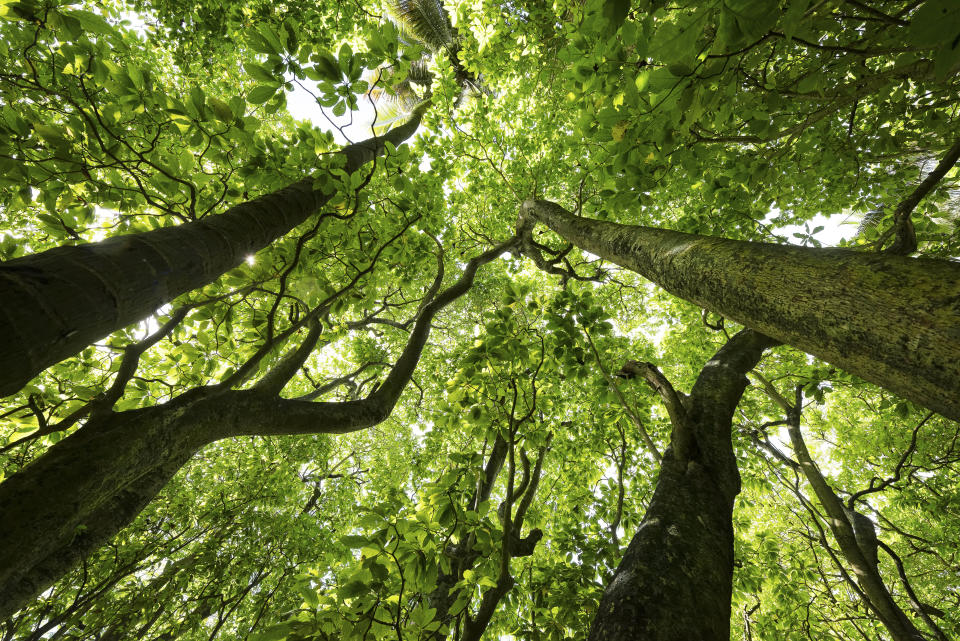
On one hand, the researchers at Palmyra have ultimately spent years of work and millions of dollars to make things better on a tiny, pretty island in the middle of the Pacific, but the impact of that work goes far beyond them. It shows that ambitious steps at the right time can have exponential influence on making things better.
“One of the things that a lot of people in Iowa and Tennessee and Alabama are hearing is that coral reefs are a doomed ecosystem and are not going to be able to survive into the future, that we should refocus our efforts,” Mr Wiggins said. “What Palmyra demonstrates is that coral reefs are capable of taking the same impacts of climate change that are killing reefs, changing others, and are capable not only of surviving, but continuing to be diverse, healthy, and abundant.”
Mr Wegmann, the scientist, calls the pint-size Palmyra a “hope spring” and a “conservation sandbox” from which people can learn how to do restoration and resilience work in a way that moves beyond artificial boundaries of land and ocean, human and animal, and instead looks at whole ecosystems.
“With an understanding of that connectivity, we can reorganise our conservation priorities for better return on investment, for a bigger impact for our resources dedicated to conservation” Mr Wegmann said. “Nature doesn’t really see these boundaries as well as we do, or as harmfully as we do.”
Their next project is to take that mindset and apply it to the whole ocean. Beginning in 2009 in the final days of the George W Bush administration, Palmyra became part of the Pacific Remote Islands Marine National Monument, which it helped inspire, a protective zone that bars any fishing or resource extraction within 50 nautical miles in any direction from the atoll and other Pacific islands. The Obama administration expanded these protections in 2014 to cover a total of more than 490,000 square miles, the largest marine island reserve in the world.
The Conservancy is going to track the movements of key species of sharks, manta rays, and seabirds, along with conditions on the island and in wider the monument, to see whether the safe zone really is that safe, and what all their conservation efforts have amounted to in the aggregate.
“The entire ecosystem of Palmyra is dependent on having a healthy ocean ecosystem surrounding it” Mr Wiggins said. “There are connections both literal and theoretical that are much bigger than Palmyra itself. It’s speck of land within a big ocean.”
Surviving a pandemic
The success of Palmyra, and of all attempts at conservation, depend on the human element as well, a dedication to wringing the maximum positive change out conditions on the ground and taking action when new threats arise. At the atoll specifically, 1,000 miles by plane from the nearest major hub in Honolulu, it also requires a mix of vigilance, craftiness, and thrift to make sure the enormous resources being used on their endeavour are worth it. They’re like astronauts in board shorts. Mr Wiggins joked that on the island a breakfast burrito costs $150.
The atoll has been a scientific hub for over 100 years, helping inform the study of Earth’s magnetic field and the long-range passage of waves through the ocean, but the Nature Conservancy bought it outright in 2000 for around $37 million, to keep it from being turned into a nuclear waste storage facility. Now it’s a largely self-sufficient compound, running mainly on solar energy.
Even in a protected reserve, the challenges of working there remained unabated. The most reliable way to reach Palmyra is a 2,000-mile round trip charter flight. Without constant maintenance, the jungle would take back Palmyra’s runway and the field station’s electrical systems would rust in the tropical damp.
“You realise how much the land and the ocean belongs to itself,” Ms Khen, the graduate student, said. “It’s a true force of nature. It represents what the natural world is capable of.”
But without careful planning, the consequences of human interaction with the island could change things in an instant, even before there was a pandemic.
To avoid bringing more unwanted stowaways like rats, and undoing generations of conservation work in an instant, researchers and volunteers on Palmyra freeze their clothes.
During the coronavirus, they’ve added even more layers of caution, including a mandatory preflight isolation period of 14 days and two negative tests, plus another two weeks of social distancing upon arriving at the atoll.
The extreme isolation that makes Palmyra so sensitive an environment, and so sensational as a place of study, also means it’s not a bad place to ride out a global pandemic. Normal staff rotations on Palmyra last for a few months, but in April, as the pandemic worsened, some Nature Conservancy staff elected to stay on for most of the year. So far there have been no cases of Covid on the atoll.
“We started reading more and hearing about the Covid problem,” Marsha Papaleo, who runs the Palmyra station’s kitchen and housekeeping. “It was very strange for us to be so isolated from it and to be isolated from people that we know and love. But we felt safe though when we were there. We were very glad not to be in the centre of all the chaos that is going on.”
Still, like the crew of the Esperanza before them, there were long days of waiting and uncertainty.
“A lot of us didn’t know what was going to happen, when the next plane was going to come, how we were going to deal with it,” Ms Papaleo added. “You really wanted to go home, but I’m in such a good safe place.”
Then there was the small matter of the presidential election. The middle of the Pacific might seem like a politics-free zone, but what happens on the mainland politically always reaches them.
Some of the earliest forays into using Palmyra as a plantation were only possible after as US imperial ambitions expanded and Congress passed the 1856 Guano Islands Act, which allowed citizens to claim uninhabited islands with big guano deposits, and after the US annexed Hawai’i, which had its own claims on the atoll.
Washington continues to dictate the atoll’s fate. Donald Trump ordered his cabinet agencies to explore opening marine monuments like the one that holds Palmyra to fishing and resource extraction.
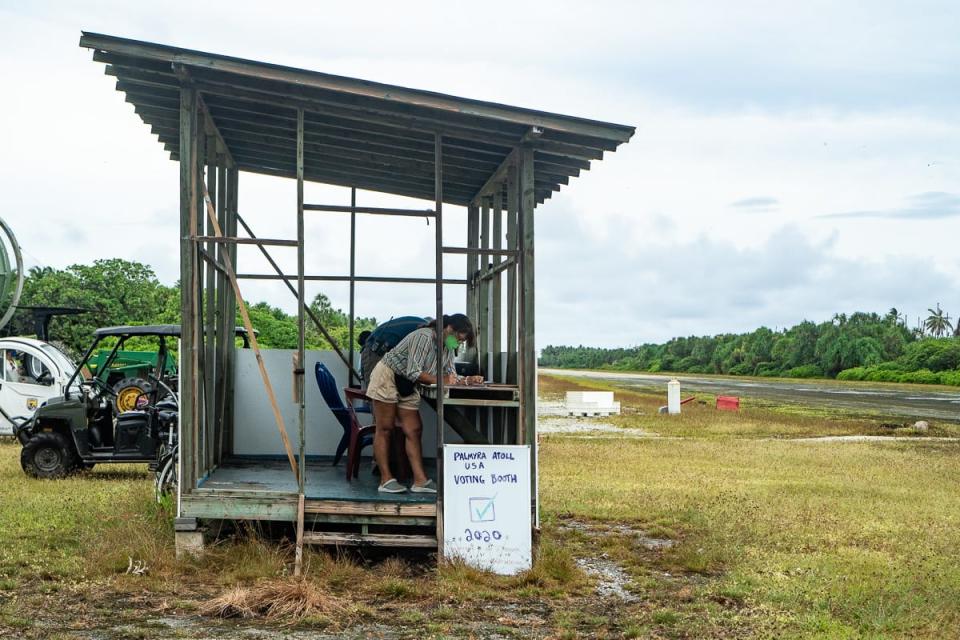
Suffice to say, even with a population in the single digits, the vote matters on Palmyra, which is why they built their own tiny voting booth, cast their ballots, then had them sealed in an envelope and flew them on a resupply plane 1,000 miles to Hawai’i to be recorded. According to those on the island, it was “surreal” being so far away as a pandemic and an election tore the country apart, but it also has its benefits for riding out elections.
“It simultaneously one of the worst and best places to be because you feel so detached from your real world community, but at the same time being able to go and sit on the beach and have land crabs walk past you and seabirds fly over, you realised the planet is bigger than our political dramas,” said Mr Wegmann, who was on Palmyra during the 2016 election. “It reminds me to think in biological time instead of political election cycles.”
There’s a kind of mystic connection that forms between Palmyra and the people who go there, where people savour the natural world’s slow, ancient rhythms while working urgently to save them in the present and future.
Mr Wegmann, calling into a video chat from a crammed gear shed in his yard, said he thinks about the atoll “every day I’m not there”.
Meanwhile, Ms Papaleo, the facilities and galley boss, said that it takes a certain kind of person to do the work they do on the atoll, and many previously worked in the Arctic before, whose hundreds of researchers make Palmyra’s handful of personnel seem somehow even more remote.
“A lot of the people on Palmyra have come from the ice. It’s kind of neat to see this circle,” she said. “It’s a lifestyle for sure. You walk away from all the stuff you have right in front of you. You put yourself out there in the middle of the ocean.”
Climate crisis
But Palmyra is no paradise, and it will never truly be cut off from the rest of the world. It’s a damaged island, surrounded by an ocean that will rise as climate change worsens. Bits of micro-plastic regularly wash up on shore, and crabs have been spotted using sections of plastic pipe as their shells. Unexploded ordnance remains across the atoll from its military days, and certain areas require a safety escort from government personnel. Wayward sailors occasionally blow onto Palmyra, in dire need of provisions.
It’s a lovely place, but one whose fate will ultimately be decided by human influence, just like everywhere else during the Anthropocene.
“One of my favourite things to think about as an ecologist is not the pristine beautiful coral reef habitat that surrounds the atoll – I’m not diminishing it though – it’s the damaged parts of Palmyra,” Mr Wegmann said.
“You can’t cut the people part out and still have conservation,” he said. “It’s for us. It’s by us, and it’s because of us, because of our past actions, that we need to do this.”
Our past actions have already shown us the immense power we have over the natural world. Now the future will be determined by how we choose to wield that power.
There is still one part of Palmyra that’s in the private hands, belonging to the heirs of Henry Ernest Cooper, a prominent American lawyer who helped lead the coup that deposed the Hawaiian monarchy in 1893. If the Esperanza’s treasure does exist, it’s believed to be on one of those islands, and if anyone has found it, they haven’t revealed themselves.
But on the rest of the atoll, and in an invisible circle of protected ocean surrounding it, humans have decided the treasure is the Earth itself, and another wayward crew will keep watch over it until rescue arrives.

